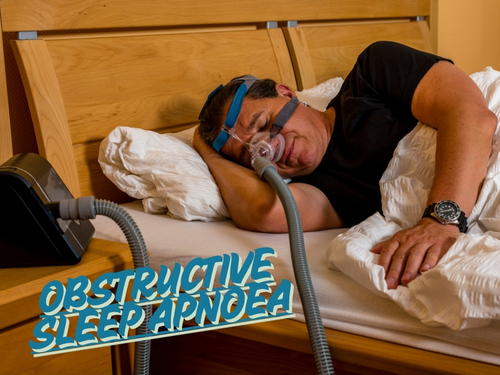Obstructive Sleep Apnoea
Definition
Obstructive sleep apnoea (OSA) is a disorder in which breathing is repetitively interrupted during sleep due to collapse of the upper airway. An apnoea is defined as complete cessation of breathing lasting 10 seconds or greater. OSA causes hypertension and neurocognitive impairment whilst severe OSA predisposes to coronary artery disease, stroke and increased mortality.
Typical scenarios
• Patient complains of daytime sleepiness, awakening with gasping/ choking sensation
• Partner reports loud snoring, pauses in breathing during sleep
• Obese patient
• Complaint of sleep fragmentation
• Constant fatigue and lack of energy
• Resistant hypertension
What to Ask
Daytime sleepiness: active and passive situations, Epworth Sleepiness Scale
Cardiovascular history and risk factors Driving risk: red flags (falling asleep at the wheel, ESS> 16, MVA related to sleepiness)
Memory, concentration and mood (depression)
Consider OSA screening questionnaire: OSA50 score≥ 5 for moderate to severe OSA
Consider differential diagnosis of excessive daytime sleepiness:
• Lifestyle factors
• Insomnia
• Morbid obesity (hypoventilation)
• Circadian rhythm disorders
• Sedating medications
• Endocrine/neurological causes
• Chronic medical conditions
• Depression/anxiety
What to Examine
• Airway (narrow/crowded)
• Tonsils (enlarged)
• Nasal patency
• Blood pressure
• Neck circumference (>42cm)
• BMI (>30)
• Signs of pulmonary hypertension
Treatment plan for today
Educate OSA explanation and handout (link below), avoid sleeping supine (e.g. sew tennis ball to back of pyjamas).
Prescribe weight loss (5-10% loss can improve symptoms), smoking cessation, alcohol reduction, intranasal steroids if chronic nasal congestion.
Refer to sleep specialist for assessment and overnight sleep study (link below) if symptoms of OSA, OSA50 score ≥ 5, disruptive snoring with a neck circumference ≥42cm Refer to sleep specialist if concurrent cardiopulmonary disease, obesity hypoventilation syndrome, complex sleep disorder, driving risk, forensic investigations.
Note: depending on local resources (eg rural), laboratory or home sleep studies may be ordered by GP in consultation with sleep specialist.
Advise to adhere to safe driving practice or not to drive whilst awaiting further investigation if high driving risk (red flags above) (link below).
Concurrent sleep disorders (e.g. insomnia) or other co-morbid disorders (e.g. depression) need to be managed in conjunction with OSA.
Future management
Review if lifestyle measures successful and recheck
sleepiness in 4-6 weeks.
Follow up after sleep specialist diagnosis/management plan
(eg patient trialling mandibular advancement splint or CPAP)
Where to access more information:
Patient information
www.sleephealthfoundation.org.au/public-information/fact-sheets-a-z/191-obstructive-sleep-apnea.html
In-depth information for clinicians
http://erspublications.com/content/obstructive-sleepapnoea
www.sleep.org.au/professional-resources/healthprofessionals-information/the-medical-journal-ofaustralia
About Us
At RSDC we have a particular interest in quick approach and triaging patients with suspected lung malignancy, management of pleural diseases, sleep disorders of obstructive sleep apnoea and other more complex sleep disorders, airways disease including asthma and COPD.
We use a comprehensive approach to interstitial lung disease in addition to occupational and environmental lung disease.

